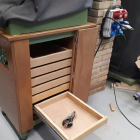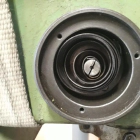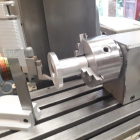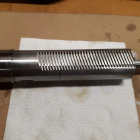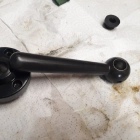One of this summer works have been to finish the cabinet of the the Wörner B13 drilling press. It was mainly a work of covering the steel frame support with MDF. The final desire is to get it prepared to fit the electrical wiring and a set of drawers to organize the tooling of the machine.
